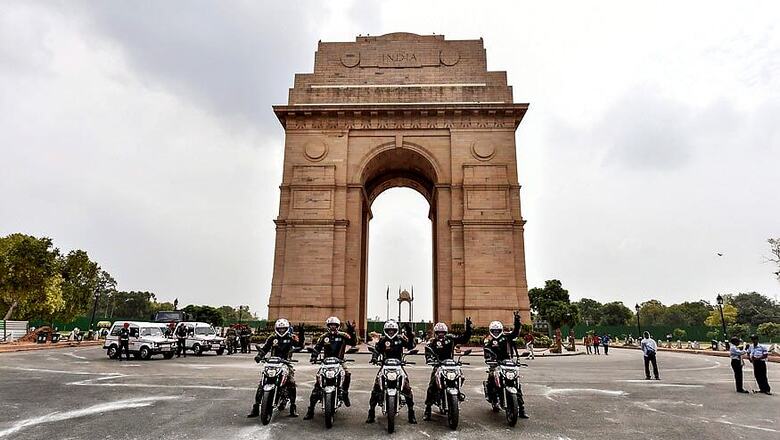
views
India’s 73rd Independence Day will be celebrated with enthusiasm across the country on August 15. Like every year, the main Independence Day function will be held at Red Fort, where Prime Minister Narendara Modi will take the guard of honour, unfurl the tricolor and address the nation.
The National Capital is specially spruced up for the occasion with major government buildings adorned with lights, flags and festooning. To celebrate the day, here are a few places you can visit in Delhi to boost your patriotic fervor.
Raj Ghat
The memorial dedicated to Mahatma Gandhi is a black marble platform that marks the spot of Mahatma Gandhi's cremation on 30 January 1948, a day after his assassination.
Located on Delhi's Ring Road, officially known as Mahatma Gandhi Road, you can head to the walled enclosure that houses the memorial via a stone footpath that is flanked by lush-green lawns.
There are also several other samādhis or cremation spots of former Indian prime minister like Jawahar Lal Nehru (Shantivan), Lal Bahadur Shastri (Vijay Ghat ) and Atal Bihari Vajpayee (Rashtriya Smriti Sthal) in the vicinity of Raj Ghat.
The Raj Ghat area has a park adorned with trees planted by visiting dignitaries and heads of state.
Rajpath
Constructed as King's Way during the British Raj, the ceremonial boulevard runs from Rashtrapati Bhavan on Raisina Hill through Vijay Chowk and India Gate, National War Memorial (India) to National Stadium, Delhi. Lined on both sides by huge lawns, canals and rows of trees, Rajpath hosts the annual Republic Dayparade on 26 January and is also used for the funeral processions of key political leaders of India. It is considered to be one of the most important roads in India.
India Gate
The war memorial, originally called the All India War Memorial, is a located in the centre of New Delhi, on the eastern edge of the Rajpath. The India Gate was designed by Edwin Lutyens, the architect of New Delhi, in the memory of 70,000 soldiers of the British Indian Army who died in the First World War (1914–21) and the Second Anglo-Afghan War.
13,300 servicemen's names, including some soldiers and officers from the United Kingdom, are inscribed on the gate.
In January 1972, following the Bangladesh Liberation war, the Amar Jawan Jyoti, or the Flame of the Immortal Soldier, was unveiled to pay tributes to the martyred and unknown soldiers of the Indian Armed Forces who died during the war. The Amar Jawan Jyoti is located under India Gate and consists of a marble pedestal and a cenotaph placed on it. Since 1972, every-year on the Republic Day, the country’s President, Prime Minister, and three Chiefs of the Air Staff, Naval Staff, and the Army Staff besides other dignitaries place wreaths at Amar Jawan Jyoti to pay respects to the dead and unknown soldiers.
Follow News18 Lifestyle for more



















Comments
0 comment